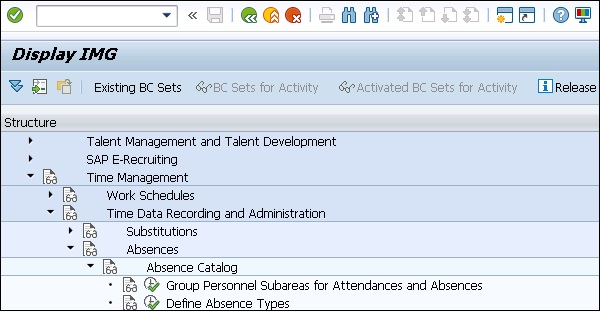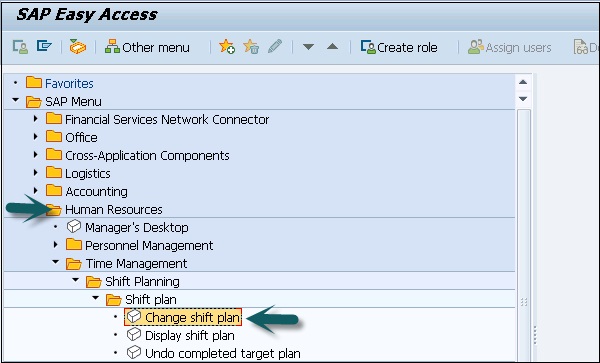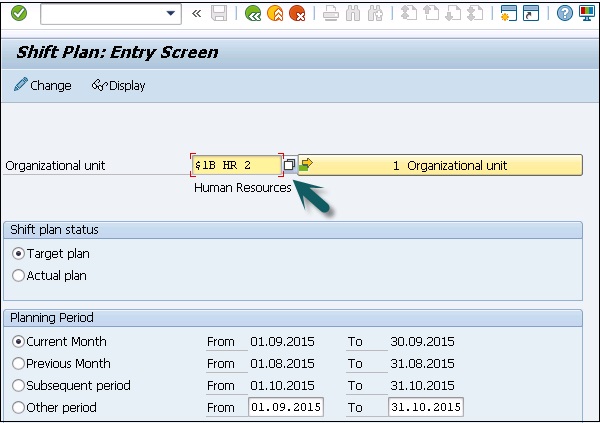
- SAP HR - Introduction
- SAP HR - Maintaining Relationships
- SAP HR - Time Constraints
- SAP HR - Maintaining Infotypes
- Personal Administration
- SAP HR - Personnel Administration
- SAP HR - Master Data
- SAP HR - Infotypes
- SAP HR - Personnel Actions
- SAP HR - Changing Infotypes
- Time Management
- SAP HR - Time Management
- SAP HR - Work Schedules
- SAP HR - Public Holiday Calendar
- SAP HR - Attendance Absences
- Benefits
- SAP HR - Benefits
- Payroll
- SAP HR - Payroll Management
- SAP HR - Basic Pay Infotypes
- Primary and Secondary Wage Types
- SAP HR - Payroll Process
- SAP HR - Gross Pay
- SAP HR - Payroll Cycle
- SAP HR - Universal Work List
- SAP HR Useful Resources
- SAP HR - Quick Guide
- SAP HR - Useful Resources
- SAP HR - Discussion
SAP HR - Attendance Absences
SAP HR systems can maintain attendance and absence.
To maintain attendance and absence in SAP HR system, go to SPRO → IMG → Time Management → Time data recording and administration → Absence.

To view attendance quotas and absence quotas of your employee, you can use this query −
Query − 0HCM_PT_T01_Q0001
With quota entitlement, this also includes compensated, deducted and unused quotas.
To obtain details about an employees attendances and absences, you can use query −
Query − 0HCM_PT_T01_Q0002
This query is called from manager self-service from attendance and absence quota overview query and the results display the information for the employee that you selected in a query.
Shift Management in HR
Shift management deals with accurately defining the number and the type of resources that are required to run the business operations.
Shift planning is one of the components of Personnel time management. Exchange of data between human resources and personnel management components ensures the data given below −
- Changes relevant to planning in time data recording
- Changes relevant to payroll in shift planning
- Changes relevant to planning in time evaluation
- Integration with HR components
| Function Required | Component Required |
|---|---|
| Access to organizational structures | Organizational Management (PA) |
| Access to employee qualifications | Qualifications/Requirements (PA-PD-QR) |
| Determining an employees working times | Time Data Recording and Administration (PT-RC) |
| Simulated evaluation of employee working hours during planning process | Time Evaluation (PT-EV) |
| Running the payroll for an employee | Payroll (PY) |
Shift Planning Component
To start the shift planning component follow the steps given below −
Step 1 − Human Resource → Time Management → Shift Planning → Change Shift Plan.

Step 2 − Select the Shift Planning profile and Organizational Unit as shown in the screen shot given below and click Change.

Step 3 − You can select the shift plan. In the Shift plan status field, select the ID of the desired shift plan (either target or actual plan).
In the Planning period section of the screen, select the time period for which you want to plan the shifts.
Change Shift Plans
There are two types of Shift plans namely, target and actual plans.
You can use Shift plans to display the employees who are selected from the evaluation path of the entry profile and the entry objects.
The calendar for the desired planning period can be checked and it can be used to view additional information like organizational unit, personnel number, etc. for a selected employee in a separate information column.
Note that it is possible to change the target plans at any time till a target plan is complete. You can only edit the actual plan once you have completed the target plan. You can change actual plans at any time.
To change a target plan if it is not completed, you need to set target plan complete or partially deleted.
Important T-codes for Time management
- PP61: Change Shift Planning
- PP63: Change Requirements
- PP62: Display Requirements
- PO17: Maintain Requirements Profile
- PP69: Choose Text for Organizational Unit
- PP6B: Attendance List
- PP6A: Personal Shift Plan
- PP72: Shift Planning
- PQ17: Actions for Requirement Profiles
- PP67: Create Requirements
- PP60: Display Shift Planning
- PP64: Choose Plan Version
- PP65: Edit Entry Object
- PP66: Shift Planning: Entry Profile
Overtime and Breaks Schedules
Overtime and Breaks Schedules come under positive and negative time recording. There are four types of break schedules −
- Fixed Break Schedule
- Variable Break Schedule
- Dynamic Break Schedule
- Overtime Break Schedule
Fixed Break Schedule
Fixed break schedule, the timings of the break for an employee is fixed. He is provided with certain time duration. At the same time, every day, say 30 min, 60 min and only in this time-frame, an employee has to take a break.
Example − Break timings are fixed, i.e. 1:30 PM to 2:30 PM and an employee has to take a break daily during this time interval.
Variable Break Schedule
In this break schedule, the timing of break is not fixed. Employee is provided with a time duration. The employee can take a break within this duration only.
Example − Break duration - 12:30 PM to 2:30 PM. An employee can take any one hour as break and if the break time exceeds the fixed break time, the salary is reduced.
Dynamic Break Schedule
In Dynamic break schedule, no certain time range is given and break can be taken after working for a certain number of hours.
Example − An Employee can take a break after working continuously for 4 hours from the start of the shift. In this case, if an employees shift starts at 9:00 AM, he can take the break at 1:00 PM.
Overtime Break Schedule
In overtime break schedule, you define the break time, which is taken during over-time of the shift. This can be a fixed break schedule, which is taken during over-time.
Example −
09:00 AM to 05:00 PM − Routine working Hours.
05:00 PM to 9:00 PM − Overtime Hours.
7:30 PM to 08:00 PM − Overtime Break.
Following are the T-Codes that can be used to manage work schedule −
T-Code to Generate the Work Schedule PT01.
T-Code to Change the Work Schedule PT02.
T-Code to Display the Work Schedule PT03.